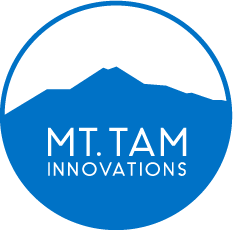A Successful Mindset for Remote Work
The COVID-19 pandemic has presented a wealth of challenges for both individuals and families. There are significant financial repercussions, mental health impacts from lack of human connection and a general sense of heightened fear in adjusting to a new way of life. At the same time, the pandemic has presented numerous challenges for businesses. According to a June 2020 study conducted at Stanford University, 42 percent of the United States labor force is now working remotely full time – a number that comprises over two thirds of all U.S. economic activity.
While many tech savvy global organizations have successfully managed a predominantly remote workforce for more than a decade, remote work, for the mainstream, has historically been stigmatized, with links to reduced work output, poor performance and disengaged employees. The current climate is forcing companies to look past these stereotypes and find their truth. Employers are looking for ways to create optimum environments where both their company’s bottom line and their teams will survive and even thrive. In making their way in this uncharted territory, they are learning that they may have been approaching the situation from the wrong perspective. Remote work can be far more than tolerable, as the stereotypes suggest – though it requires discipline from both employers and employees, remote work can actually be a better set-up than a standard office environment.
With so many companies and individuals making the transition to remote work, many are starting to see that there are endless benefits to the new remote work lifestyle: flexible schedules, cost savings, sustainability impacts, and positive mental health impacts due to a better work-life balance. Just as office set-ups have changed, the concept of work-life balance has evolved. Employers are beginning to understand the key to success in remote work is acknowledging the shift from a focus on work-life balance to heralding employees that implement work-life integration.
Work-life integration involves a less defined system of separation between different areas of life. When approaching the dedication of time and effort, an employee focused on work-life integration will look at all aspects of their life holistically, to help avoid making work such a drastic separation from family, community, home, health, and issues that arise in everyday life.
How to make the transition to remote work seamless while keeping focus on this new mindset of work and life? Here are some tips regarding best practices in remote work to help employers find a system of work-life integration that works for them and their employees:
Create a culture that provides employees clear expectations around their schedules AND allows the flexibility to arrange their days from a distance. While everyone is working individually, set consistent weekly check-in times that work for projects, individuals or teams to keep cohesion.
Leverage calendaring tools that provide transparency for availability and adopt best practices for setting meetings without “yelling over the cubicle”.
Adopt a “Chat tool” like WebEx Teams or Microsoft Teams with agreed-upon expectations around responses to support efficient collaboration, quick help and evaluations with different methods of communications. Let employees share their preferences in communication styles so that no one feels threatened by an inability to participate in a certain way.
Delegate explicit daily or weekly tasks for all team members to focus on so boundaries are established after completing these tasks. Create a universal way of tracking deliverables so that the entire team is aware of what everyone else is working on.
Monitor performance based on deliverable achievement and output – results – rather than time spent online.
Establish clear technical support for employees and perform routine checks to make sure remote systems are in place and functioning well.
Acknowledge the shift to digital documentation. Make sure the team has proper naming conventions in place so shared documents stay organized and remain easily accessible.
Maintain team unity by providing opportunities for non-work interaction or non-work-related bonding or learning. This can be as simple as spearheading small talk at the end of a team meeting or a once-a-month “all hands” to keep the connections. Do not forget about the personal and emotional aspects of the lives of all team members in the remote world.

